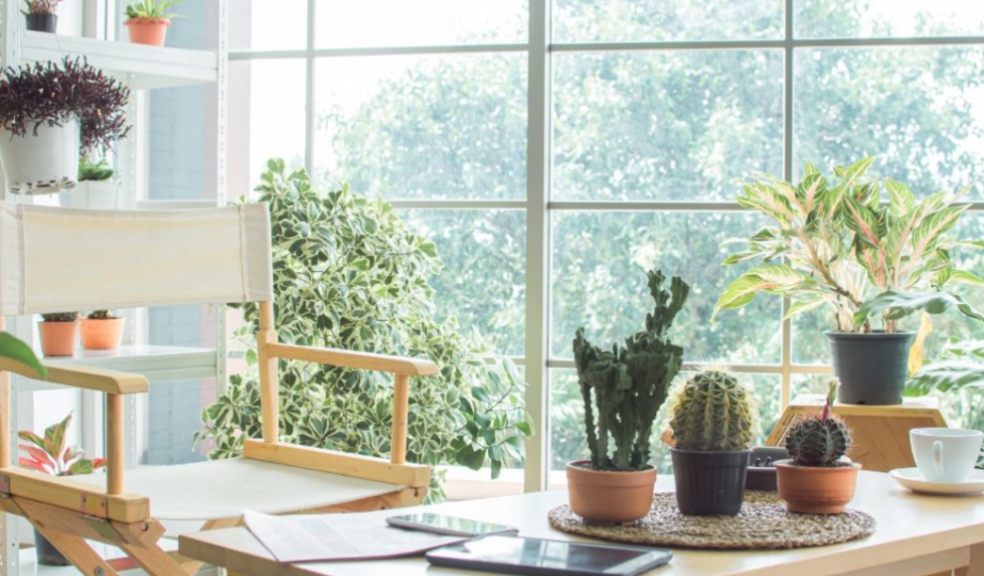
How to Decorate your Home Office with Plants for Maximum Productivity
If you're looking for a way to make your home office more beautiful, you should consider getting some plants.
They not only add some color, but they also provide a nice aroma. Whether you're looking for an orchid, a Peace lily, a Boston fern, or an English ivy, you're sure to find something to suit your taste.
English Ivy
Adding plants to your home office is a great way to improve productivity and enhance your mood. These easy to maintain plants make a big impact on the atmosphere of your workspace. Plants are also a low maintenance way to add color and structure to your desk.
English Ivy (Hedera helix) is an evergreen, woody-stemmed vine that is a popular choice for gardens and indoor plants. The leaves of English Ivy are generally dark green, with a glossy surface and lobed edges.
The flowers are small and yellowish-green in color, and the fruits are black berries. English Ivy is not only attractive, but it can also be used as a form of ground cover or to provide shade and shelter. English Ivy is hardy in most climates and can tolerate a variety of soils and light levels.
English Ivy is an easy-care plant that can help transform your workspace. You can wrap it around a wire obelisk or trellis for a unique look. If you are in an area where shade is a possibility, don't worry. The leaves will still shine.
Other low-maintenance options include the lady slipper orchid or the ZZ plant. They require minimal watering and are ideal for any light level.
Snake Plant
The Snake Plant is an easy-to-care-for houseplant that’s been around for decades. It’s hardy, tolerates neglect and even thrives in low light.
The snake plant can live for years without much maintenance. It does well indoors in just about any environment and is often recommended for people who are new to houseplants.
The Snake Plant has long, sword-shaped leaves that are variegated with yellow, white, and green. It produces small white flowers when it blooms in a well-lit environment. The leaves of the Snake Plant are thick and leathery, and it has a neat, upright habit. It’s a slow grower and does not need frequent repotting.
Snake Plants are hardy and tolerant of a wide range of light conditions, from low to bright indirect sunlight. They do not need frequent watering and will tolerate periods of neglect. Place the Snake Plant in a well-drained potting soil that is slightly sandy.
Water the plant only when the top inch of soil is dry. Avoid overwatering, as this will cause root rot. Fertilize the plant every two months during the growing season with a balanced houseplant fertilizer.
Boston Fern
Boston Fern (Nephrolepis exaltata) is a popular houseplant that is easy to care for. They thrive in indirect sunlight and moist, humid environments.
Water regularly, but do not over-water them; they should be kept slightly moist at all times. They need to be fertilized every two weeks with a balanced fertilizer. It is also important to trim off any dead fronds to improve air circulation and keep the plant healthy.
Place your Boston fern in an area where it will get plenty of indirect sunlight, such as near a window or on a shaded patio. Make sure to mist the leaves regularly to encourage healthy growth and avoid disease.
To ensure that your fern stays healthy and grows properly, it is important to repot it every couple of years in a pot with fresh soil. When repotting, use a pot that has ample drainage holes; otherwise, water will collect in the bottom of the pot and cause root rot.
Make sure that you are using a light, airy soil mix specifically formulated for ferns. In addition to repotting periodically, it is also important to groom your fern regularly.
Trim off any damaged or dead fronds with sharp scissors or pruners to improve air circulation and maintain healthy growth. As a final touch, you can use an insecticidal soap periodically to protect your fern from pests.
Peace Lily
The Peace Lily, also known as Spathiphyllum, is a popular houseplant that is easy to care for and has beautiful white flowers.
It can thrive in low light conditions, making it an ideal choice for many homes and offices. The Peace Lily prefers moist soil and should be watered regularly. It is important to keep the soil from becoming waterlogged, as this can lead to root rot.
The Peace Lily benefits from weekly misting and occasional feeding with a balanced fertilizer during the growing season. Pruning is recommended for controlling the size and shape of the plant.
The white flowers of Peace Lily last several weeks, making it an attractive addition to any indoor environment. With proper care, the Peace Lily can be a long-lasting houseplant for many years to come.
Hoya
This family of flowering vines, also known as wax plants, is native to Southeast Asia.
You can grow the plants outdoors in hot climates, but they're best grown indoors for maximum productivity. These plants are drought-tolerant and can be kept in hanging baskets. There are many varieties of the plant, with leaves ranging in shape and color. Several varieties have variegated leaves and some even produce pink and purple petals.
Hoyas can be cultivated from stem cuttings. When rooted, the stems can be planted in a pot for optimal performance. Once the plant has developed, it will take about five years before it's ready for flowering.
Hoyas require a well-draining soil. They can tolerate drought and dry conditions, but you should water the plant when the top two inches of the soil are dry. Watering too often can cause root rot.
These plants are generally low-maintenance, making them a great choice for home office owners. However, they are susceptible to mealybugs. An approved systemic insecticide can treat infestations.
To get started, you'll need to find the right container. If you're just starting out, choose a sturdy, clear container that's heavy. Then fill it with potting soil. Be sure to use a dilution rate of about one teaspoon per gallon of water.
Final Word
Decorating your home office with plants is an excellent way to increase productivity. Plants help improve air quality by filtering out toxins, provide a calming and soothing atmosphere, reduce stress levels, and add beauty and color to the room.
Investing in some pretty plants for your workspace can be a great way to make it more inviting and productive. Just make sure you pick the right plants, place them in the right location, and take care of them properly so they can last a long time.













